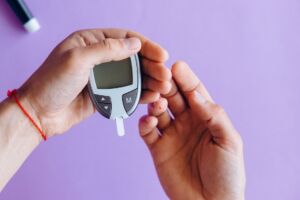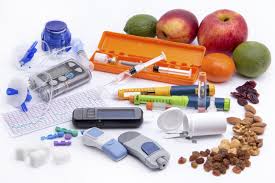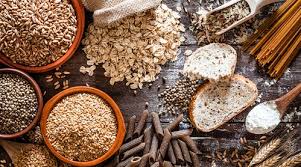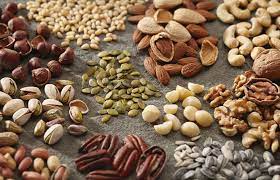Diabetes Mellitus: Understanding the Types, Symptoms, and Management
Diabetes is a serious health condition that occurs when the body can no longer regulate its own blood sugar levels, leading to high levels of glucose in the blood. This can cause long-term damage to vital organs such as the heart, kidneys, eyes, and even the nervous system. People with diabetes often have to manage their condition by changing their diet, getting regular exercise, and taking prescribed medications or insulin injections. A range of lifestyle factors including stress, obesity and genetics are thought to contribute to a person’s risk of developing diabetes. The complications associated with this disease can be severe if not managed properly, so it is important for those at risk or living with diabetes to take preventative measures and receive adequate medical care. Please keep reading for details on the following topics:
Types of diabetes
Causes of diabetes
Risk factors of diabetes
Manifestations of diabetes
How diabetes is diagnosed
Complications of diabetes
Management of diabetes
Home remedies for diabetes

TYPES OF DIABETES
There are four main types of diabetes: pre-diabetes, type 1 diabetes, type 2 diabetes, and gestational diabetes.
- Pre-diabetes – Prediabetes is a condition in which blood sugar levels are higher than normal, but not high enough to be classified as type 2 diabetes. Prediabetes is considered a warning sign because if left untreated, it can progress to type 2 diabetes.
- Type 1 Diabetes:
- Autoimmune Destruction: Type 1 diabetes is primarily an autoimmune disorder where the body’s immune system mistakenly attacks and destroys the insulin-producing beta cells in the pancreas. This autoimmune response is triggered by a combination of genetic predisposition and environmental factors, such as viral infections.
- Insulin Deficiency: As beta cells are destroyed, the pancreas produces little to no insulin, leading to a deficiency of this hormone. Without sufficient insulin, glucose cannot enter cells for energy, resulting in elevated blood sugar levels.
- Ketoacidosis: In severe cases of untreated Type 1 diabetes, the body may break down fat for energy instead of glucose, leading to the production of ketones. This can cause a dangerous condition called diabetic ketoacidosis (DKA), characterized by high blood sugar levels, dehydration, and acidosis.
- Type 2 Diabetes:
- Insulin Resistance: Type 2 diabetes typically begins with insulin resistance, where cells in the body become less responsive to the effects of insulin. This resistance causes the pancreas to produce more insulin to compensate.
- Beta Cell Dysfunction: Over time, the beta cells in the pancreas may become exhausted and dysfunctional due to the continuous demand for insulin production. This results in reduced insulin secretion.
- Impaired Glucose Regulation: With insulin resistance and beta cell dysfunction, the body struggles to regulate glucose effectively. Blood sugar levels remain elevated, leading to hyperglycemia.
- Chronic Inflammation and Lipotoxicity: Chronic low-grade inflammation and the accumulation of lipids (lipotoxicity) in tissues contribute to insulin resistance and further impair insulin signaling, exacerbating the progression of Type 2 diabetes.
- Gestational Diabetes:
- Hormonal Changes: During pregnancy, hormonal changes can lead to insulin resistance, especially in women with pre-existing risk factors such as obesity or a family history of diabetes.
- Beta Cell Dysfunction: Similar to Type 2 diabetes, gestational diabetes may involve dysfunction of beta cells and impaired insulin secretion.
- Increased Glucose Production: Hormonal changes also stimulate the production of glucose by the liver, further contributing to elevated blood sugar levels.
DIABETES RISK FACTORS
There are several risk factors that increase the likelihood of developing diabetes, including:
- Family history: If you have a close family member with diabetes, such as a parent or sibling, your risk of developing the condition is higher.
- Age: The risk of diabetes increases as you get older, particularly after age 45.
- Obesity or overweight: Being overweight or obese is a significant risk factor for type 2 diabetes, as it can lead to insulin resistance.
- Physical inactivity: A sedentary lifestyle is associated with an increased risk of type 2 diabetes.
- Race or ethnicity: Certain ethnic groups, such as African Americans, Hispanic/Latino Americans, and Asian Americans, have a higher risk of developing diabetes.
- High blood pressure or high cholesterol: Having high blood pressure or high cholesterol levels can increase your risk of developing diabetes.
- Gestational diabetes: Women who have had gestational diabetes during pregnancy are at a higher risk of developing type 2 diabetes later in life.
- Polycystic ovary syndrome (PCOS): Women with PCOS have a higher risk of developing type 2 diabetes due to insulin resistance.
- Lifestyle factors: Sedentary lifestyle with insufficient physical activity
- Within the age range of 45 years or older
- A past history of diabetes in pregnancy
- Borderline blood sugar readings
It’s important to note that having one or more risk factors does not necessarily mean you will develop diabetes, but it’s important to be aware of them and take steps to reduce your risk.
MANIFESTATION OF DIABETES
Diabetes can manifest in various ways, with symptoms ranging from subtle to severe. The manifestations depend on factors such as the type of diabetes, the individual’s overall health, and the level of blood sugar control. Here are the common manifestations of diabetes:
- Frequent Urination (Polyuria): Elevated blood sugar levels can lead to increased urine production as the kidneys work to eliminate excess glucose from the bloodstream.
- Excessive Thirst (Polydipsia): Polyuria often leads to dehydration, triggering excessive thirst as the body attempts to replenish lost fluids.
- Increased Hunger (Polyphagia): Despite eating, individuals with uncontrolled diabetes may experience persistent hunger due to the body’s inability to properly utilize glucose for energy.
- Weight Loss: Unintentional weight loss, particularly in Type 1 diabetes, can occur as the body breaks down muscle and fat for energy due to insufficient insulin.
- Fatigue and Weakness: Without adequate glucose entering cells for energy, individuals with diabetes may feel fatigued and weak, especially after meals.
- Blurred Vision: Fluctuations in blood sugar levels can affect the shape of the eye’s lens, leading to temporary changes in vision.
- Slow Wound Healing: High blood sugar levels can impair blood circulation and the body’s ability to heal wounds, increasing the risk of infections and slow healing.
- Recurrent Infections: Diabetes weakens the immune system, making individuals more susceptible to infections, particularly in the urinary tract, skin, and gums.
- Numbness and Tingling (Neuropathy): Long-term high blood sugar levels can damage nerves, leading to numbness, tingling, or pain, often starting in the extremities.
- Yeast Infections (Genital): Elevated glucose levels in the urine and genital area provide an ideal environment for yeast growth, leading to recurrent genital yeast infections, especially in women.
- Dry Skin and Itching: Diabetes can cause dry skin and itching, particularly in the lower legs, due to poor circulation and nerve damage.
-
Changes in Mental Status: Severe cases of uncontrolled diabetes, such as diabetic ketoacidosis (DKA), can lead to confusion, drowsiness, and even loss of consciousness if left untreated.
HOW DIABETES IS DIAGNOSED
Diabetes is diagnosed through a combination of clinical symptoms, risk factors assessment, and laboratory tests. The diagnostic process typically involves the following steps:
- Assessment of Symptoms and Risk Factors:
- Healthcare providers evaluate the patient’s medical history and inquire about symptoms such as increased thirst, frequent urination, unexplained weight loss, fatigue, and blurred vision.
- They also consider risk factors such as family history of diabetes, obesity, sedentary lifestyle, age (especially over 45), history of gestational diabetes, and ethnicity (some ethnic groups have a higher risk).
- Blood Tests:
- Fasting Plasma Glucose (FPG) Test: This test measures blood glucose levels after an overnight fast. A blood sample is taken in the morning before the person eats or drinks anything other than water. A fasting plasma glucose level of 126 milligrams per deciliter (mg/dL) or higher on two separate occasions indicates diabetes.
- Oral Glucose Tolerance Test (OGTT): In this test, the person fasts overnight, and then their fasting blood sugar level is measured. Afterward, they consume a glucose-rich drink, and blood sugar levels are measured periodically over the next two hours. A blood sugar level of 200 mg/dL or higher two hours after consuming the glucose drink indicates diabetes.
- Random Plasma Glucose Test: This test involves measuring blood sugar levels at any time of the day, regardless of when the person last ate. A random blood sugar level of 200 mg/dL or higher, along with symptoms of diabetes, indicates diabetes.
- Glycated Hemoglobin (A1C) Test:
- The A1C test measures the average blood sugar level over the past 2-3 months by assessing the percentage of hemoglobin that is glycated (attached to glucose). An A1C level of 6.5% or higher indicates diabetes.
- Additional Tests:
- In some cases, additional tests may be performed to confirm the diagnosis or evaluate for complications of diabetes, such as a urine test to check for the presence of ketones (in cases of suspected diabetic ketoacidosis) or tests to assess kidney function.
-
Repeat Testing:
- If the initial tests indicate diabetes, healthcare providers may recommend repeat testing on a separate day to confirm the diagnosis and rule out temporary fluctuations in blood sugar levels.
COMPLICATIONS OF DIABETES
Diabetes, if left uncontrolled or poorly managed, can lead to various complications affecting multiple organ systems throughout the body. These complications can be acute or chronic and may develop gradually over time. Here are some of the primary complications associated with diabetes:
- Cardiovascular Complications:
- Heart Disease: Diabetes significantly increases the risk of developing cardiovascular diseases such as coronary artery disease, heart attack (myocardial infarction), and stroke.
- Hypertension (High Blood Pressure): Diabetes is often associated with hypertension, which further elevates the risk of heart disease and stroke.
- Peripheral Artery Disease (PAD): Diabetes can lead to narrowing and hardening of the arteries in the legs, reducing blood flow and increasing the risk of complications such as leg pain, ulcers, and even amputation.
- Neuropathy (Nerve Damage):
- Peripheral Neuropathy: Diabetes can damage the nerves in the extremities, leading to symptoms such as numbness, tingling, burning sensations, and pain, typically starting in the feet and hands.
- Autonomic Neuropathy: Damage to nerves that control involuntary functions can lead to digestive issues, urinary problems, sexual dysfunction, and cardiovascular abnormalities.
- Nephropathy (Kidney Damage):
- Diabetic Nephropathy: High blood sugar levels over time can damage the kidneys, impairing their ability to filter waste products from the blood and leading to kidney disease or even kidney failure.
- Albuminuria: Protein (albumin) may leak into the urine due to kidney damage, a condition known as albuminuria or proteinuria.
- Retinopathy (Eye Damage):
- Diabetic Retinopathy: Diabetes can damage the blood vessels in the retina, leading to vision problems and, if left untreated, potentially causing blindness.
- Macular Edema: Fluid accumulation in the macula (the central part of the retina) can cause blurred or distorted vision.
- Foot Complications:
- Diabetic Foot Ulcers: Nerve damage and poor circulation increase the risk of foot problems, including ulcers, infections, and in severe cases, gangrene, which may require amputation.
- Charcot Foot: Weakening of the bones in the foot due to neuropathy can lead to fractures and deformities known as Charcot foot.
- Skin Complications:
- Infections: Diabetes increases the risk of skin infections, including bacterial and fungal infections, as well as slow wound healing.
- Diabetic Dermopathy: Diabetes may cause changes in the skin’s appearance, including patches of light brown, scaly skin.
-
Mental Health Complications:
- Diabetes is associated with an increased risk of mental health conditions such as depression, anxiety, and diabetes distress, which can affect quality of life and self-care behaviors.
MANAGEMENT OF DIABETES

The management of diabetes depends on the type of diabetes and the individual’s specific needs. It is important for people with diabetes to work closely with their healthcare provider to develop an individualized treatment plan that takes into account their specific needs and goals. With proper management, people with diabetes can live healthy, active lives and reduce the risk of complications associated with the condition. However, some general strategies for managing diabetes include:
- Regular monitoring of blood sugar levels is essential for people with diabetes. This helps to ensure that blood sugar levels are within target ranges and allows for adjustments in treatment plans as needed.
- A healthy diet that is rich in whole grains, fruits, vegetables, lean protein, and healthy fats is important for managing diabetes. Eating smaller, frequent meals throughout the day can also help to keep blood sugar levels stable. Changing the diet- less sugar, fats and refined carbohydrates.
- Regular physical activity can help to improve insulin sensitivity, lower blood sugar levels, and reduce the risk of complications associated with diabetes.
- Medications, such as insulin or oral medications, may be prescribed to help manage blood sugar levels.
- Education and support are essential for managing diabetes. This may include working with a healthcare team, attending diabetes self-management classes, and joining support groups.
- Regular check-ups with healthcare providers are important for monitoring blood sugar levels, blood pressure, and other indicators of diabetes control, as well as for identifying and managing any complications that may arise.
Home remedies for diabetes
While there is no cure for diabetes, there are some home remedies that may help manage blood sugar levels and improve overall health. It is important to remember that home remedies are not a substitute for medical treatment, and it’s important to work with your healthcare provider to develop a personalized plan to manage your diabetes. Also, be aware that some home remedies may interact with medications or have side effects, so always talk to your healthcare provider before trying them. Here are some examples:
Cinnamon:

Cinnamon has been studied as a potential natural remedy for managing blood sugar levels in people with diabetes; it may help improve insulin sensitivity and reduce blood sugar levels, although the evidence is not conclusive. While cinnamon is generally considered safe when used in small amounts as a spice or flavoring agent in food, taking cinnamon supplements in large doses or for long periods of time may be harmful. If you have diabetes and are interested in using cinnamon as a natural remedy, talk to your healthcare provider first. They can help you determine if cinnamon is safe for you and recommend an appropriate dose and form of cinnamon supplement, if necessary. It’s also important to continue to monitor your blood sugar levels carefully and follow your prescribed diabetes treatment plan.
Apple cider vinegar:

Some people find that drinking apple cider vinegar mixed with water before meals can help lower blood sugar levels. However, more research is needed to confirm its effectiveness and safety. Apple cider vinegar (ACV) has been studied as a potential natural remedy for managing blood sugar levels in people with diabetes, may help improve insulin sensitivity and reduce blood sugar levels, although the evidence is not conclusive.
While ACV is generally considered safe when used in small amounts as a condiment or ingredient in food, taking ACV supplements in large doses or for long periods of time may be harmful. ACV supplements can interact with certain medications, and they may cause throat irritation, digestive problems, or other adverse effects in some people.
Fenugreek:

Fenugreek seeds may help improve insulin sensitivity and lower blood sugar levels. Soaking fenugreek seeds in water overnight and drinking the water in the morning or adding fenugreek to your meals may be helpful. Fenugreek is an herb that has been studied as a potential natural remedy for managing blood sugar levels in people with diabetes. Some studies have suggested that fenugreek may help improve insulin sensitivity and reduce blood sugar levels, although the evidence is not conclusive.
Fenugreek is generally considered safe when used in small amounts as a spice or flavoring agent in food, but taking fenugreek supplements in large doses or for long periods of time may be harmful. Fenugreek supplements can cause digestive problems or other adverse effects in some people.
Exercise:

Regular exercise can help improve insulin sensitivity and regulate blood sugar levels. Aim for at least 30 minutes of moderate-intensity exercise most days of the week. Exercise is an important part of managing diabetes. Regular physical activity can help improve insulin sensitivity, lower blood sugar levels, and reduce the risk of diabetes-related complications. Exercise can also help with weight management, which is an important factor in diabetes management. People with diabetes should also monitor their blood sugar levels closely before, during, and after exercise to ensure that their blood sugar stays within a safe range. They may need to adjust their diabetes medications or insulin doses before or after exercise to prevent blood sugar levels from dropping too low or rising too high.
Aloe vera:

Aloe vera is a plant that has been studied as a potential natural remedy for managing blood sugar levels in people with diabetes by helping improve insulin sensitivity and reduce blood sugar levels, although the evidence is not conclusive.
While aloe vera is generally considered safe when used topically or in small amounts as a food or supplement, taking aloe vera supplements in large doses or for long periods of time may be harmful. Aloe vera supplements can interact with certain medications, and they may cause digestive problems or other adverse effects in some people.
Red bush tea:

Red bush tea, also known as Rooibos tea, is a popular herbal tea that comes from the leaves of the Aspalathus linearis plant, which is native to South Africa help improve insulin sensitivity and reduce blood sugar levels improve markers of heart health in people with type 2 diabetes. While these studies are promising, more research is needed to confirm the potential benefits of red bush tea for diabetes management.
Green tea:

Green tea is a popular beverage that has been studied for its potential health benefits, including its effects on blood sugar levels in people with diabetes. While the evidence is not conclusive, some studies suggest that green tea may have potential benefits for diabetes management. While green tea is generally considered safe when consumed in moderate amounts, it’s important to note that it contains caffeine, which can affect blood sugar levels in some people. Additionally, green tea may interact with certain medications, such as blood thinners, so it’s important to talk to your healthcare provider before adding green tea to your diet.
Wholegrain cereal:

Whole grain cereal can be a healthy choice for people with diabetes, as it provides a good source of fiber and complex carbohydrates, which can help regulate blood sugar levels. Whole grain cereals typically have a lower glycemic index, which means they cause a slower rise in blood sugar levels compared to refined carbohydrates. When choosing a whole grain cereal, look for options that are low in added sugars and high in fiber. Aim for at least 3 grams of fiber per serving, and avoid cereals that list refined grains, such as white flour or sugar, as the first ingredient. Some examples of healthy whole grain cereals include oatmeal, muesli, and whole wheat flakes. It’s also important to watch your portion sizes when eating cereal, as eating too much can cause blood sugar levels to rise too high. Stick to the recommended serving size, and consider pairing your cereal with a source of protein, such as Greek yogurt or nuts, to help further regulate blood sugar levels.
Low fat milk:

Low-fat milk can be a healthy choice for people with diabetes, as it provides important nutrients like calcium and vitamin D, which are essential for bone health. Additionally, low-fat milk has a lower fat content than whole milk, which makes it lower in calories and saturated fat.
When choosing low-fat milk, it’s important to watch out for added sugars. Some flavored varieties of low-fat milk, such as chocolate or strawberry, can be high in added sugars, which can cause blood sugar levels to rise too quickly. Instead, opt for plain low-fat milk and add natural sweeteners like fresh fruit or a small amount of honey, if desired. It’s also important to watch your portion sizes when consuming milk, as even low-fat milk contains carbohydrates that can affect blood sugar levels. Stick to the recommended serving size of 1 cup and consider pairing your milk with a source of protein, such as a hard-boiled egg or a handful of nuts, to help balance blood sugar levels.
Coffee:

Coffee is a popular beverage consumed by millions of people worldwide, may be associated with a lower risk of developing type 2 diabetes. This may be due to the antioxidant and anti-inflammatory compounds found in coffee, which can help improve insulin sensitivity and glucose metabolism. However, it’s important to note that some people may experience negative effects from consuming coffee, particularly if they have pre-existing health conditions. For example, drinking coffee can cause a temporary increase in blood sugar levels in people with diabetes, although this effect tends to be small and is unlikely to have a significant impact on overall blood sugar control.
Additionally, some people may be more sensitive to the effects of caffeine, which can cause jitters, anxiety, and difficulty sleeping. For these individuals, it may be best to limit or avoid coffee altogether. Overall, if you have diabetes and enjoy drinking coffee, it is generally safe to do so in moderation, as long as you are mindful of the amount of caffeine and added sugars in your coffee drinks. Opt for unsweetened coffee or coffee with a small amount of natural sweeteners like stevia or cinnamon and limit your intake to no more than 2-3 cups per day.
Chili pepper:

Chili peppers are a type of hot pepper that are commonly used in cooking to add flavor and spice to dishes. They contain a compound called capsaicin, which gives them their characteristic heat and also has potential health benefits, including for people with diabetes. Studies have shown that capsaicin may help improve blood sugar control in people with type 2 diabetes by increasing insulin sensitivity and reducing insulin resistance. It may also help lower blood pressure and improve lipid profiles, which are important risk factors for cardiovascular disease. Additionally, chili peppers may help promote weight loss and reduce inflammation, both of which are important for overall health and diabetes management.
However, it’s important to note that consuming large amounts of chili peppers or spicy foods may not be suitable for everyone, especially if you have gastrointestinal issues or are sensitive to spicy foods. Additionally, if you take medication for diabetes or high blood pressure, you should speak to your healthcare provider before adding chili peppers or capsaicin supplements to your diet, as they may interact with certain medications.
Ginseng:

Ginseng is an herb that may help improve blood sugar control in people with type 2 diabetes by reducing fasting blood sugar levels and HbA1c (a measure of long-term blood sugar control). It may also help improve insulin sensitivity and reduce inflammation, both of which are important factors in diabetes management.
However, more research is needed to fully understand the potential benefits of ginseng for diabetes, as well as the optimal dosage and duration of treatment. It’s also important to note that ginseng may interact with certain medications, including blood thinners, antiplatelet drugs, and medications for diabetes and high blood pressure.
Omega-3 fatty acids:

Omega-3 fatty acids are a type of polyunsaturated fat that have been shown to have a variety of health benefits, including for people with diabetes that help improve insulin sensitivity and reduce inflammation, both of which are important factors in diabetes management. They may also help improve lipid profiles, reduce the risk of cardiovascular disease, and improve overall health and well-being.
Sources of omega-3 fatty acids include fatty fish like salmon, tuna, and sardines, as well as plant-based sources like flaxseed, chia seeds, and walnuts. Omega-3 supplements are also available, but it’s important to talk to your healthcare provider before taking any supplements to ensure they are safe and appropriate for your individual needs.
Nuts:

Nuts are a nutrient-dense food that can be a healthy addition to a diabetes-friendly diet. They are rich in protein, fiber, healthy fats, and other important nutrients that can help regulate blood sugar levels and reduce the risk of complications associated with diabetes. Additionally, nuts may help improve satiety and reduce cravings for high-carbohydrate or sugary foods, which can help with weight management and blood sugar control.
However, nuts are also high in calories and fat, so it’s important to consume them in moderation and to choose unsalted or lightly salted varieties. It’s also important to be aware of portion sizes, as eating too many nuts can lead to weight gain and may negatively impact blood sugar control. Some good options for people with diabetes include almonds, walnuts, pistachios, and pecans.
PLEASE NOTE: It’s important to note using the above remedies should not replace conventional diabetes treatment, such as medications, diet, and exercise. If you’re interested in trying the aforementioned foods as a natural remedy for diabetes, talk to your healthcare provider first. They can help you determine if it’s safe for you and provide guidance on incorporating it into your overall diabetes management plan. It’s also important to monitor your blood sugar levels carefully and continue to follow your prescribed diabetes treatment plan.
Disclaimer: The information provided in this content is for general informational purposes only. It is not intended as medical or healthcare advice, diagnosis, or treatment. Always seek the advice of a qualified healthcare professional with any questions you may have regarding a medical condition or healthcare decisions.

